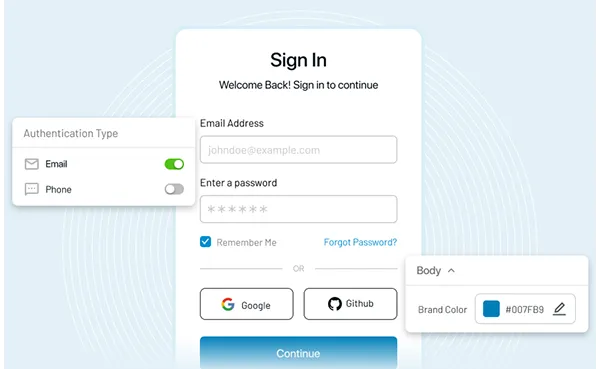With an estimated 239 million people watching video every day in the US alone, it's no wonder more, and more companies are catching on to the power of engaging, meaningful video content.
Add to this, 90% of online shoppers say video dramatically influences their buying decisions. So, who wouldn't take advantage of such a popular medium?
Not convinced yet? Take a look at these impressive statistics about video marketing that will change your mind.
10 Video Marketing Stats That Will Influence Your Strategy in 2021
- Video is the most preferred form of media used in content strategy, overtaking blogs, eBooks, and infographics. Source: Hubspot's Annual Marketing Report
- With 2+ billion users, YouTube amounts to almost one-third of the Internet population. Source: YouTube
- One billion hours are being watched daily on YouTube. Source: YouTube
- 25% of marketers planned to use TikTok as an advertising channel in 2021. Source: Google
- Smartphone users are usually more likely to watch long forms of video content that exceed more than six seconds. Once they cross the six-second benchmark, 72% are likely to keep watching. Source: Globe News Wire
- Lately, marketers have been increasing their video ad budgets by 25% year over year. The rise is more profound in specific industries like e-commerce, hospitality, and travel. Source: Iab
- According to 87% of video marketers, video provides a strong return on investment in general. Source: Wyzowl
- 86% of businesses use video as a marketing tool. It was 85% in 2020 and 87% in 2019. Source: Wyzowl
- According to 68 percent of users, the pandemic has affected the amount of video content people watch online, with 96 percent claiming it has increased. Source: Wyzowl
- Among content types, video is twice more likely to be shared with friends than social media messages, blog posts/articles, and product pages. Source: Wyzowl
Now that we've covered the recent trends let's also explore the best video marketing practices that drive maximum engagement and sales.
How to Build a Successful Video Marketing Strategy? 5 Expert-Approved Tips
While it's common for creative teams to hope for viral success, don't put all your marketing eggs in that basket.
Your video marketing strategy should create high-quality content that adapts to different platforms and channels and encourages viewers to interact and convert.
1. Start with your goals.
The first step in creating your video strategy is to outline your video's "why." The reason you want to create it, why you're sharing your story, and what you hope to accomplish by the end of the video.
Ideally, you'll create a video for each stage of the marketing funnel. But in the beginning, you'll have to prioritize. Which stage is most important?
- Awareness: Define a challenge or opportunity for your readers to realize they have a problem. Your video in this stage should attract a new set of consumers.
- Consideration: After you have narrowed down the challenge, you readers in this stage will try to look around for solutions. They will be asking questions, looking for recommendations, watching product reviews, video testimonials etc.
- Decision: You want to stay on top of things now that the answer is almost found. Show your consumer evidence of customer loyalty and why they should choose your product or service.
2. Decide what kind of story you want to tell.
A video can be delivered in many different ways, but we've found that a combination of certain parameters can help you achieve a high-end look and drive conversion.
Here are the four key elements of a solid video script.
- Protagonist: This person should have a goal that aligns with your target audience.
- Conflict: Next, highlight the pain point you want your consumers to understand.
- Quest: This is where you will introduce a solution through your product or service.
- Resolution: This is where you will explain how your product or service will solve the conflict.
Once your story has all four of these elements in place, you will have created an engaging piece of video content that people will find memorable.
3. Get your videos to rank better on Youtube.
Telling your story is great. But that's only the beginning of the equation. If you want to get more views and generate results, you need to tell YouTube what your video is about. That's where video optimization comes in.
Here are a few simple tips to get your video in front of your target audience.
- Add keywords to your title. It should be short, unique, and exciting and describe what your video is about.
- Include keywords in the detailed description too. Also, remember that only the first three lines are visible without clicking the SHOW MORE. Therefore, place your CTAs at the top.
- Add relevant tags and categorization. This allows YouTube to recommend your video to users who are watching similar videos.
- Create a custom thumbnail for the video that is consistent with your brand.
- Include subtitles and closed captions. That boosts YouTube SEO.
- Encourage viewers to leave feedback, comments, and questions.
- At the end of the video, use Youtube's native End Screens.
4. Make sure your video budget makes sense.
There is a huge misconception in marketing that if you spend enough money on an ad, you will be successful.
Just like the amount of money put into a car does not necessarily make it better, this thinking applies to video marketing.
Often, when spending more money, you are paying for celebrity endorsements and high-end production. This usually lowers the quality of the content exponentially.
While there's no one-size-fits-all way to tackle video marketing, it's important to consider both the size of your budget and how your video would translate across various screens and platforms.
5. Do not shy away from experimenting.
A/B testing is a good way to figure out which people are engaging with your video, what is working out, and what isn't.
Perhaps it's not the creative, but the messaging, or the time of day you're launching your campaign or the platforms you're using.
Alternatively, the videos may be too long or too short.
Whatever it is, make sure you experiment more to find the best content and pace for your video campaigns.
Wrapping Up
Whether you are a rookie or have been involved in video marketing for many years, you need to have the right set of goals, tasks, and rules to ensure the success of your campaign.
Even the most experienced video content creators use a system to make sure everything goes smoothly so they don't miss deadlines or lose track of what they need to do next. A transparent plan with checklists and milestones will help you adopt a more professional tone in your videos.
If you're looking to draft a campaign, start by defining your goals and then create a video production plan that follows those goals.
















